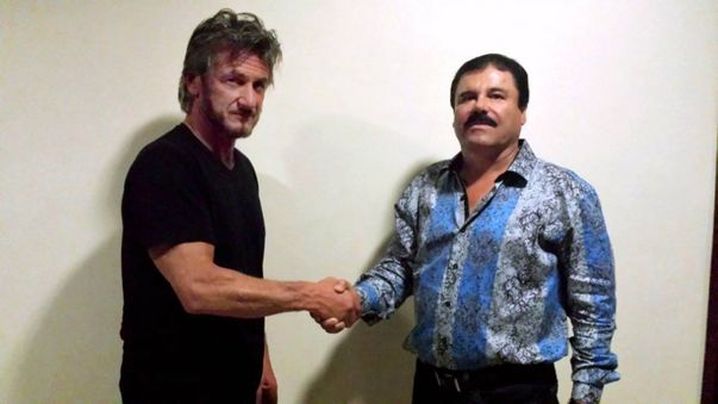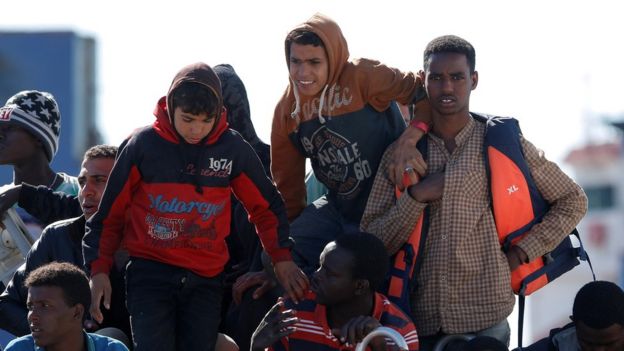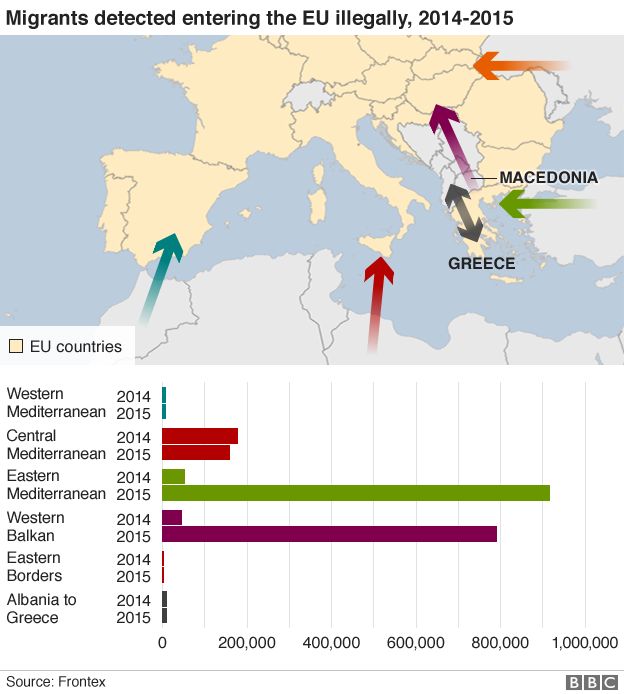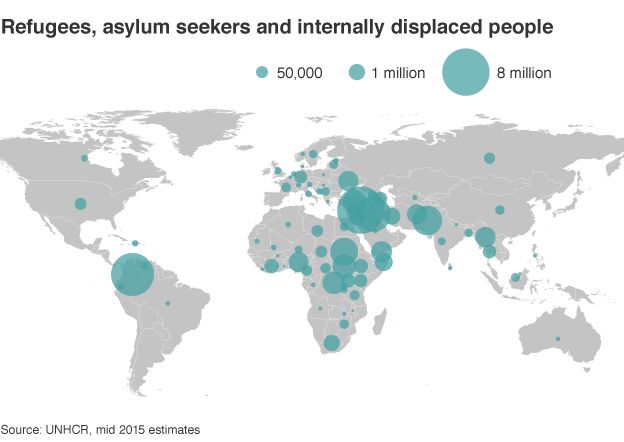There is a lot of Hillary and Bill history as previously posted here. but the video above just keeps it real and recent.
Monthly Archives: May 2016
Russia’s Other War, Cyber
Finding weakness and exploiting it in the cyber realm is hidden warfare, few speak about. For the West, Russia tops the list. China, Iran and North Korea are also on the short list. For Russia’s other targets, the Baltic States are in the Russian target list.
CBS: The U.S. has elevated its appraisal of the cyber threat from Russia, the U.S. intelligence chief said Thursday, as he delivered the annual assessment by intelligence agencies of the top dangers facing the country.
“While I can’t go into detail here, the Russian cyber threat is more severe than we had previously assessed,” James Clapper, the director of national intelligence, told the Senate Armed Services Committee, as he presented the annual worldwide threats assessment.
As they have in recent years, U.S. intelligence agencies once again listed cyber attacks as the top danger to U.S. national security, ahead of terrorism. Saboteurs, spies and thieves are expanding their computer attacks against a vulnerable American internet infrastructure, chipping away at U.S. wealth and security over time, Clapper said.
Russia ‘was behind German parliament hack’
BBC: Germany’s domestic intelligence agency has accused Russia of being behind a series of cyber attacks on German state computer systems.
The BfV said a hacker group thought to work for the Russian state had attacked Germany’s parliament in 2015.
This week it emerged that hackers linked to the same group had also targeted the Christian Democratic Union party of Chancellor Angela Merkel.
Russia has yet to respond publicly to the accusations made by the BfV.
Sabotage threat
BfV head Hans-Georg Maassen said Germany was a perennial target of a hacker gang known as Sofacy/APT 28 that some other experts also believe has close links with the Russian state. This group is believed by security experts to be affiliated with the Pawn Storm group that has been accused of targeting the CDU party.
The Russian Cyber Threat: Views from Estonia
Tensions between Russia and its adversaries in the West are escalating. In recent years, Russia has undermined the security of its neighbors by violating their land borders, crossing into their airspace unannounced and harassing them above and below sea level. Less noticed or understood, however, are Moscow’s aggressive actions in cyberspace. The small Baltic country of Estonia—a global leader in digital affairs—is well-placed to shed light on the tactical and strategic aspects of Russia’s offensive computer network operations.
In fact, three civilian and intelligence agencies responsible for cyber security—the Estonian Information System Authority, Internal Security Service and Information Board—recently issued reports that help put together different pieces of the puzzle. The conclusion is that “in cyberspace, Russia is the source of the greatest threat to Estonia, the European Union and NATO.” Now policymakers on both sides of the Atlantic must decide what to do about it.
Russia has been developing and employing offensive cyber capabilities for years. Russian cyber threat groups consist of professional, highly skilled practitioners whose daily jobs are to prepare and carry out attacks. And they don’t go after low-hanging fruit; instead, they receive specific orders on which institutions to target and what kind of information is needed. Criminals, hacktivists, spies and others linked to Russian strategic interests are usually well-financed, persistent and technologically advanced. They have a wide range of tools and resources, including the ability to carry out denial-of-service attacks, develop sophisticated malware and exploit previously unknown software vulnerabilities. Russian threat actors cloak their identities by using remote servers and anonymizing services. They target everything from the mobile devices of individuals to the IT infrastructure of entire government agencies.
Often, Russian threat actors map target networks for vulnerabilities and conduct test attacks on those systems. After carrying out reconnaissance, they conduct denial-of-service attacks or try to gain user access. Common techniques include sending emails with malicious attachments, modifying websites to infect visitors with malware and spreading malware via removable media devices like USB drives. Once inside, they continue to remotely map networks, attempt to gain administrator-level access to the entire network and extract as much sensitive data as possible. Such access also lets them change or delete data if that’s what the mission requires. They’ll often go after the same targets for years to get what they need. They have the confidence that comes from perceived anonymity and impunity; if they make a mistake or fail, they’ll simply try again.
These tactical activities are carried out in pursuit of strategic objectives. In the long term, this includes undermining and, if possible, helping to dissolve the EU and NATO. Moscow also aims to foster politically divided, strategically vulnerable and economically weak societies on its periphery in order to boost its own ability to project power and influence on those countries’ decisions. Russian cyber threat actors help by stealing military, political or economic data that gives Russia advantages in what it sees as the zero-sum game of foreign relations. The exfiltrated data can be used to recruit intelligence agents or provide economic benefits to its companies. Cyber capabilities can also be used to carry out influence operations that undermine trust between the citizens and the state. Telling examples of that strategy include its multi-week distributed-denial-of-service (DDoS) attacks against Estonia in 2007, its coordinated attacks against Ukraine’s 2014 presidential elections and the false-flag operation against a French telecommunication provider in 2015.
Most worryingly, today’s intelligence operations can enable tomorrow’s military actions. Influence operations, including the use of propaganda and social media, can create confusion and dissatisfaction among the population. Denial-of-service attacks can inhibit domestic and international communication. Coordinated, plausibly deniable attacks on multiple critical national infrastructure sectors can disrupt the provision of vital services such as energy, water, or transportation. This can provide a context for the emergence of “little green men”. Malicious code can be weaponized to hinder military and law enforcement responses. Clearly, cyber capabilities have the potential to be a powerful new tool in the Kremlin’s not-so-new “hybrid warfare” toolbox. With enough resources and preparation, they can be used in attempts to cause physical destruction, loss of life and even to destabilize entire countries and alliances. Such operations could be but a decision or two away in terms of planning, and perhaps several months or years before implementation. What can be done about it?
Preventive and countermeasures exist at the personal, organizational, national and international levels. Individuals should take “cyber hygiene” seriously, since Russian threat actors target both personal and work devices. This includes employing basic security technologies, backing up data, not visiting dubious websites and not opening suspicious emails. Organizations that handle sensitive information should adopt stricter security policies, including for handling of work-related data on personal devices. Information systems managers must be especially vigilant since they are primary targets, and weak personal security on their part may compromise national security. For their part, governments must enact the basics: computer security laws, national cyber strategies, a police focus on cybercrime, national CERTs, public-private partnerships and capable intelligence agencies. They also need continuous training and exercises to keep relevant agencies prepared for their missions. Finally, global cooperation and expeditious exchange of information among cyber security firms, national computer security incident response teams (CSIRTs) and security services are key to identifying Russian attack campaigns and taking defensive countermeasures.
All such countermeasures comprise elements of a deterrence-by-denial strategy that aims to raise the cost of carrying out malicious operations. States have also undertaken diplomatic initiatives to manage the potential instability that could result from the use of weaponized code—namely confidence-building measures, norms of responsible state behavior and attempts to agree on international law. While laudable, none of these have curbed Russian cyber aggression in the short term. For example, Russia’s coordinated December 2015 attack on the Ukrainian electrical grid—highlighted in all three agencies’ reports—was clearly an attack on critical national infrastructure that violated tentative international norms signed by Russia, possibly even while the campaign was being prepared. Defensive and diplomatic countermeasures must be complemented by a cohesive strategy of deterrence-by-punishment by individual countries as well as like-minded allies.
Cyber threat actors with links to Russia (APT28/Sofacy/Pawn Storm, the Dukes/APT29, Red October/Cloud Atlas, Snake/Turla/Uroburos, Energetic Bear/DragonFly, Sandworm Team and others) target NATO members on a daily basis—mainly for espionage and influence operations. But a recent SCMagazineUK article claims that the FSB plans to spend up to $250 million per year on offensive cyber capabilities. “Particular attention is to be paid to the development and delivery of malicious programs which have the ability to destroy the command and control systems of enemy armed forces, as well as elements of critical infrastructure, including the banking system, power supply and airports of an opponent.” Clearly, we had better be prepared.
Mexican Drug Cartels Worldwide, Even Australia
9NewsAustralia: Mexican drug cartels have infiltrated Australia and are supplying bikies, Middle Eastern gangs and Asian triads with cocaine and ice, according to a new report.
The cartels have made Australia a prime target because of “significantly higher” drug prices on our shores compared to the US and South America, The Daily Telegraph quotes a University of Canberra report as saying.
The report found a kilogram of cocaine in Australia can fetch up to $350,000, while the same amount would fetch around $73,000 in the United States.
“Their presence threatens to not only increase the supply of illicit drugs in Australia but encourage turf wars and increase the amount of guns in the country,” associate professor Dr Anthea McCarthy-Jones, and the report’s author, said.
Mexico is the world’s largest producer of ice, according to a 2015 United Nations report.
Actor Sean Penn with El Chapo shortly before he was recaptured. (Sean Penn/Rolling Stone)
Drug importation offences in NSW have increased by 10.7 percent each year for the past 10 years, according to the NSW Bureau of Crime Statistics and Research.
Mexican drug cartels are some of the most violent and notorious in the world.
The head of the Sinaloa cartel, Joaquin ‘El Chapo’ Guzman, was recaptured in Mexico in January after being on the run for six months.
He is believed to be behind thousands of drug-related murders in the Mexico and the US.
Read more at http://www.9news.com.au/national/2016/05/09/06/28/mexican-drug-cartels-supplying-bikies-with-ice-report#WhI71ukRs8xZTLDk.99
Mexican drug cartels and dark-networks: an emerging threat to Australia’s national security
Over the past decade Mexican drug cartels’ power and the violent struggles between them have increased exponentially. Previously Mexico, and in particular the border regions with the US, were the key battle grounds for control of distribution routes. However, today Mexican drug cartels are now looking abroad in an attempt to extend their operations. This expansion has seen several cartels moving into lucrative international markets in Europe and the Asia Pacific.
It is in this context that Australia has now become a target of several Mexican cartels. They have already established linkages in the Asia Pacific and are further attempting to strengthen and expand these — with a particular focus on penetrating the Australian market. These developments show how Mexican drug cartels operate as ‘dark-networks’, successfully creating a global system that seeks to capture new markets, and further extend their control and dominance of the flow of illicit drugs around the world.
Full white paper document here.
Source: Strategic and Defence Studies Centre (ANU) Owning Institution: Australian National University
For Australia, the emergence of Mexican drug cartels in local markets presents not only criminal but strategic challenges. The size of these operations, their resources and ‘dark-network’ structure makes
them a difficult opponent. Their presence threatens to not only increase the supply of illicit drugs in Australia, but encourage turf wars, increase the amount of guns in the country, tax border security resources and threaten the stability and good governance of South Pacific transit spots.
This represents the end of Australia’s ‘tyranny of distance’, which previously acted as a buffer and protected Australia from the interests of remote criminal groups such as the Mexican cartels.
The Breakdown Prediction of Europe
Fighting wars in the Middle East with politically correct rules of engagement leads to no victory, but rather a long agonizing conflicts where millions are displaced, governments are failing and human suffering has no limitations.
The migrant condition is predicted to continue for at least five years. Europe is slated to suffer economically as a result and respective countries will lose their identity and management control.
These conditions fester yet do not include the building hostilities in Eastern Europe which is facing an insurgency by Russia where real old fashioned ground wars are forecasted. After 16 years of fighting the terrorist model of conflicts the conventional type of warfare is forgotten in training and muscle memory and could be a real conundrum for the Baltic region.
Meanwhile, what is Europe’s long term plan? Answer, there is no plan. ****
Europe migrant crisis: EU faces ‘populist uprising’
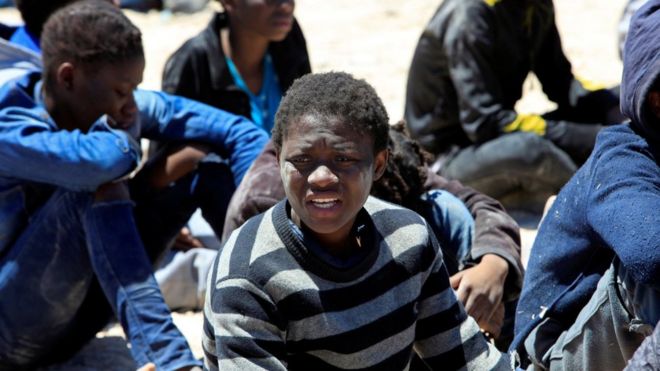
Reuters: Europe has seen a surge in the number of migrants trying to reach the continent
BBC: Europe faces a “populist uprising” if it is unable to show people it can control the migrant crisis, former MI6 head Sir Richard Dearlove has said.
He was speaking on the BBC’s World on the Move day on migration issues.
Sir Richard also warned against offering visa-free travel to Turkish nationals, describing the move as like storing gasoline near a fire.Earlier, UN special envoy Angelina Jolie Pitt warned the humanitarian system for refugees was breaking down.
She spoke of a “fear of migration” and a “race to the bottom” as countries competed to be the toughest to protect themselves.
A range of speakers, including the UNHCR’s special envoy Angelina Jolie Pitt, and former British secret intelligence chief Sir Richard Dearlove, have been setting out the most important new ideas shaping our thinking on economic development, security and humanitarian assistance.
Sir Richard said the numbers of immigrants coming into Europe over the next five years could run into millions.
The crisis could reshape the continent’s geopolitical landscape, he said.
“If Europe cannot act together to persuade a significant majority of its citizens that it can gain control of its migratory crisis then the EU will find itself at the mercy of a populist uprising, which is already stirring,” he added.
He described the UK referendum on leaving the EU as “the first roll of the dice in a bigger geopolitical game”.
Reuters: There are concerns that Europe is unable to control the flow of migrants
Sir Richard warned against a deal with Turkey to allow visa-free travel to the EU to its citizens in exchange for controlling migration to the EU.
He said it was “perverse, like storing gasoline next to the fire we’re trying to extinguish”.
Talks between the Turkey and the EU over the deal have currently stalled over the former’s refusal to amend its anti-terror laws.
The former head of MI6, which gathers intelligence abroad for the UK government, said €1.8bn (£1.4bn) allocated by the EU to address the root causes of migration in Africa made “much more sense” than a deal with Turkey but was not nearly enough.
The only answer was a “massive response” of this kind combined with a “much more aggressive operation along the North African coast”, he added.
But Sir Richard cautioned against shutting the door on migration altogether.
“In the real world there are no miraculous James Bond-style solutions,” he said. “Human tides are irresistible unless the gravitational pull that causes them is removed.”
Speaking earlier in the day, Ms Jolie Pitt said that more than 60 million people – one in 122 – were displaced globally – more than at any time in the past 70 years.
“This tells us something deeply worrying about the peace and security of the world,” she said, adding: “The average time a person will be displaced is now nearly 20 years.”
Ms Jolie Pitt said the “number of conflicts and scale of displacement had grown so large” the system to protect and return refugees was not working.
Save the Children is calling for greater international commitment to ensure child refugees remain in school.
The charity’s new report, A New Deal for Refugees, says only one in four refugee children is now enrolled in secondary school.
It is calling on governments and aid agencies to adopt a new policy framework that will ensure no refugee child remains out of school for more than a month.
It is an ambitious target but there is growing concern that this migration crisis is producing a lost generation of children which means conditions for even greater insecurity and poverty.
A note on terminology: The BBC uses the term migrant to refer to all people on the move who have yet to complete the legal process of claiming asylum. This group includes people fleeing war-torn countries such as Syria, who are likely to be granted refugee status, as well as people who are seeking jobs and better lives, who governments are likely to rule are economic migrants.
$$ Taken Out of Veteran’s Pockets for Visa Program
But we are still in Afghanistan and will be there for many years…where is the United Nations? What role does the refugee resettlement program have in this so as not to penalize veterans?
The Senate Grew A Special Visa Program With Money Taken Out Of Veterans’ Pockets
***** Meanwhile Afghanistan is hardly stable or a conflict where victory is claimed.
17 May 2016 – The United Nations humanitarian wing has reported that since the beginning of the year, about 1,000 Afghans have fled their homes every day due to fighting, and aid workers are struggling to meet the needs of those on the run from hard hit provinces such as Kunduz, Herat and Uruzugan.
According to a report compiled in April and newly released by the UN Office for the Coordination of Humanitarian Affairs (OCHA), the main humanitarian story of the year is the very large number of people fleeing from their homes to save their lives, with about 118,000 on the move in the first four months of the year.
Specifically in Kunduz, OCHA said springtime in the north eastern province “has been tragically filled with conflict and suffering,” leading to an extraordinary displacement of more than 22,400 people. Civilians appear to be caught in the cross-fire between a “spring offensive” launched by non-State actors and subsequent countermeasures put in motion by Government forces.
Fleeing for their lives, 14, 000 people were forced from Kunduz city to remote areas where the conflict is most active. The insecure environment and access constraints created severe challenges in the delivery of humanitarian assistance.
As the violence continued after mid-April, families were forced to flee and seek safety with family members and neighbours who opened their doors to offer a haven in the midst of chaos. “When we conducted the initial needs assessments, as many as six families were living in one house,” reported Syed Zaheer, OCHA Humanitarian Affairs Officer, who helped lead the joint assessment mission.
The security situation in Kunduz province continued to rapidly deteriorate, OCHA said. And as displacement swelled, aid agencies prioritized urgent humanitarian assistance to the 7,000 displaced people, however in many cases one of the biggest challenges is access to reaching the most vulnerable families in need.
According to the report, as the battle raged on for territorial control in all seven districts of Kunduz province, families were further displaced to more remote and insecure areas where humanitarian agencies continue to struggle to gain access.
Although physical access to displaced families remains a challenge due to IEDs, military operations and road closures, humanitarian agencies managed to deliver much needed food, nutritional support, emergency shelter, non-food items (NFIs) and health care.
“The displaced families in Kunduz have endured repeated suffering – some displaced two and three times – raising their vulnerability,” explained OCHA Head of Sub-Office, Gift Chatora. “We have seen the detrimental consequences when displaced families are inaccessible to humanitarian assistance, children miss out on education, nutrition and basic health care while parents lose their livelihoods and means to provide for their families.”

